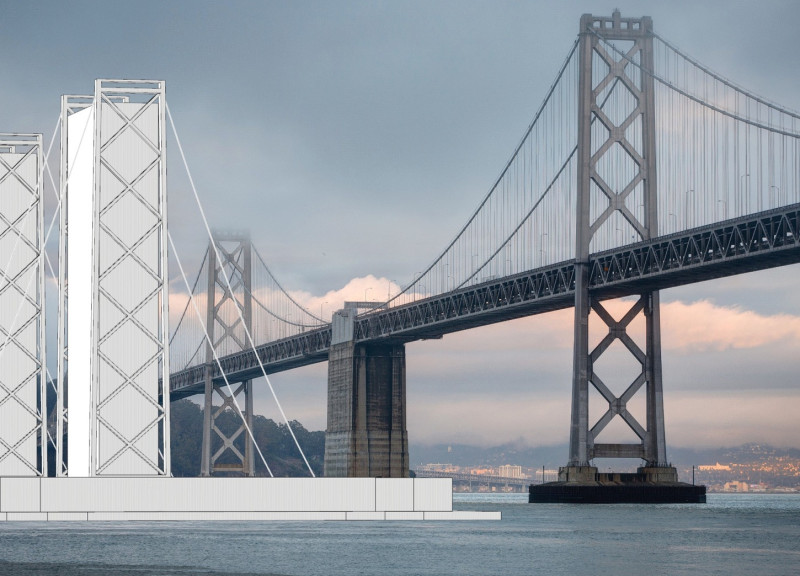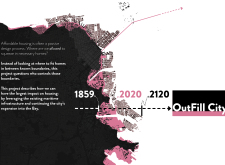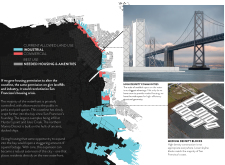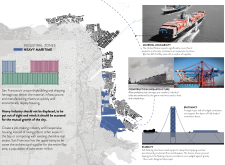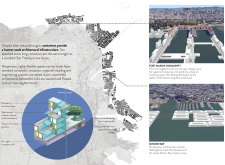5 key facts about this project
The project aims to address the housing crisis in San Francisco by focusing on affordable housing that integrates with the city's maritime infrastructure. Located along the Bay, the design proposes to expand residential areas into the water, reshaping the traditional understanding of urban boundaries. The concept focuses on creating high-density living spaces using floating structures, providing new solutions to the ongoing demand for housing.
Floating Blocks
Central to the design is the idea of floating blocks. These structures will establish communities directly on the water, maximizing the use of space in a city where land is becoming increasingly limited. By expanding into the Bay, the project offers residents unique access to waterfront amenities while encouraging connectivity within the urban fabric.
Structural Considerations
Building on water comes with challenges, especially regarding stability. The design incorporates a single-layer raft of airtight containers, which allows for buoyancy and support for multiple layers above. Structural integrity is essential; therefore, the project includes braces that prevent the floating blocks from tipping over, a crucial detail in a city prone to earthquakes. This careful consideration enhances both safety and functionality for future residents.
Integration of Industrial Zones
In addition to housing, the design emphasizes the importance of integrating residential areas with local industrial zones. San Francisco's maritime history plays a significant role in this approach. By keeping industries within the urban landscape, the project preserves jobs while fostering a thriving economy. This blend of spaces shows that residential and industrial functions can coexist harmoniously, contributing to a vibrant community.
Historical Context
The project draws from the historical context of San Francisco’s waterfront, referencing significant areas like Hunter's Point and Islais Creek. These locations highlight the evolution of the city's shoreline, where past developments have shaped its current identity. By proposing floating blocks, the design aims to connect with this history while paving the way for modern solutions to housing needs.
With its focus on practical insights and community integration, the design presents a clear vision for urban living that respects both the environment and the city’s heritage, emphasizing functionality while maintaining an engaging relationship with the surrounding waters.


